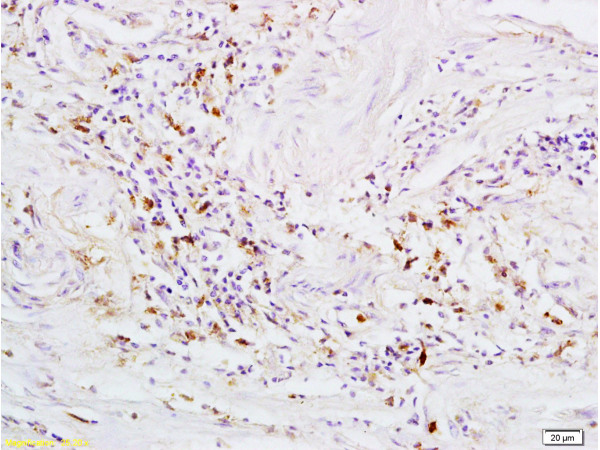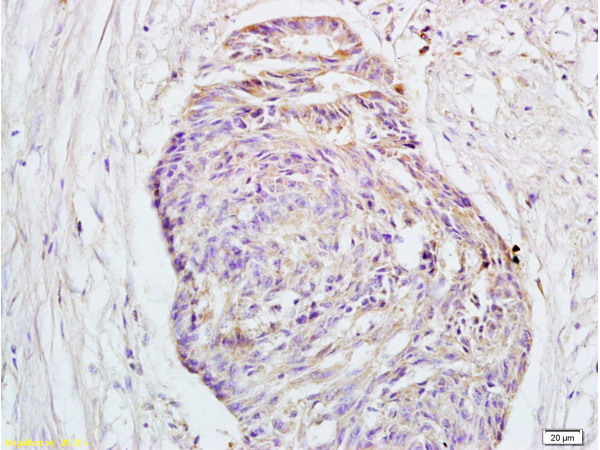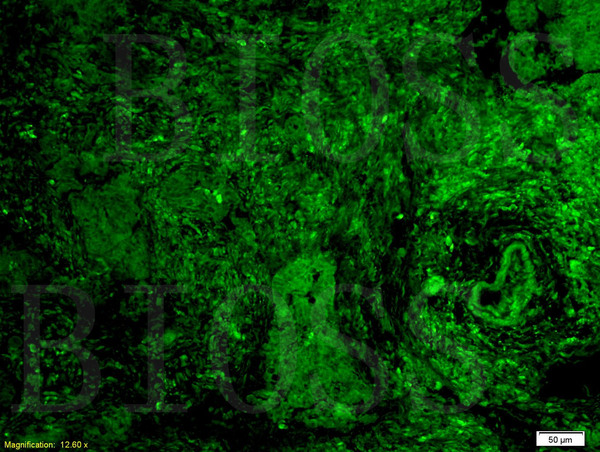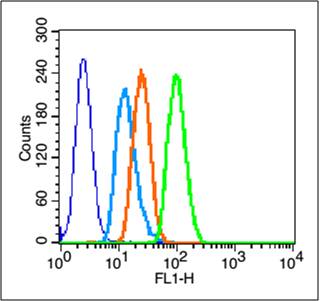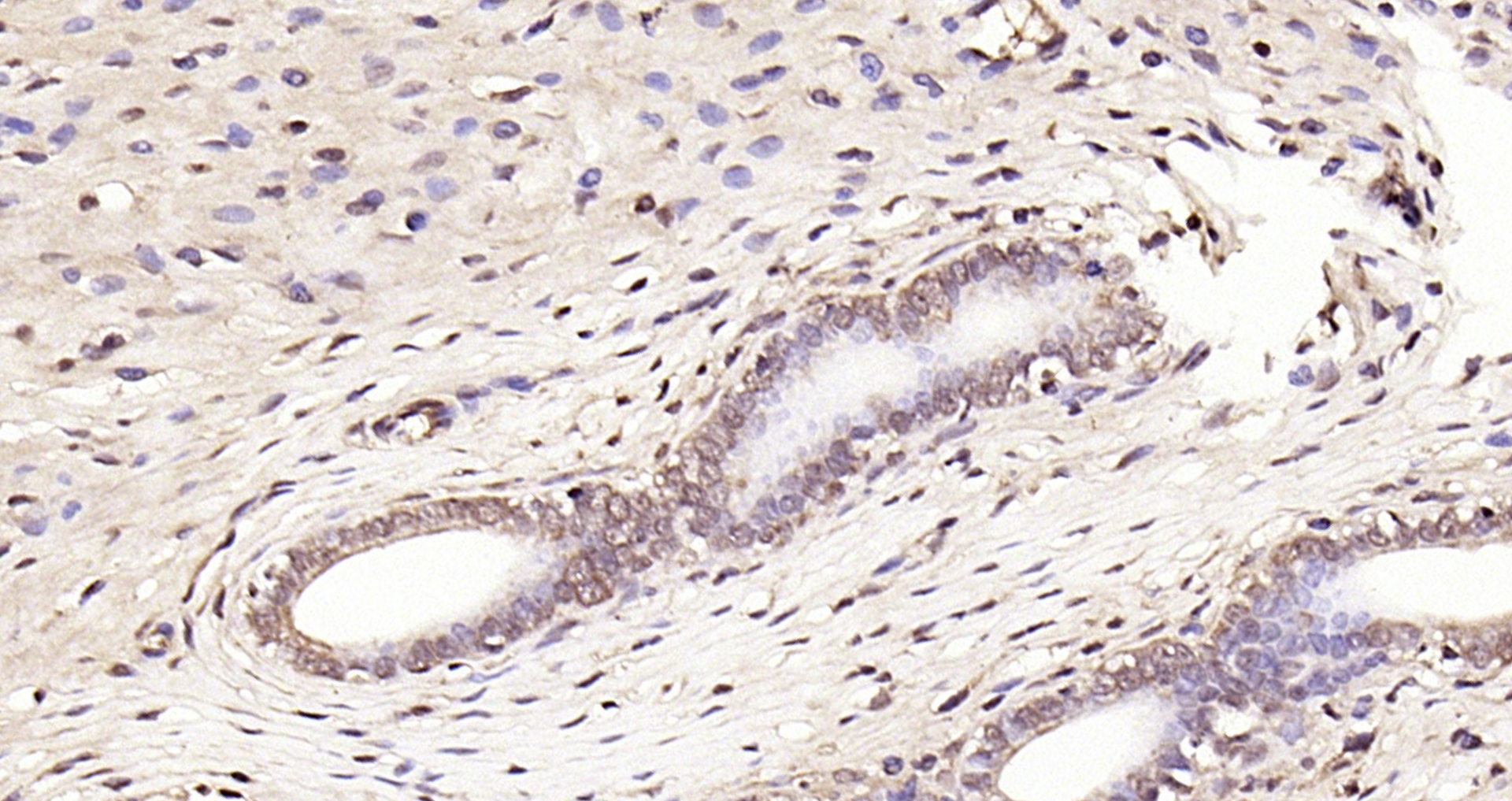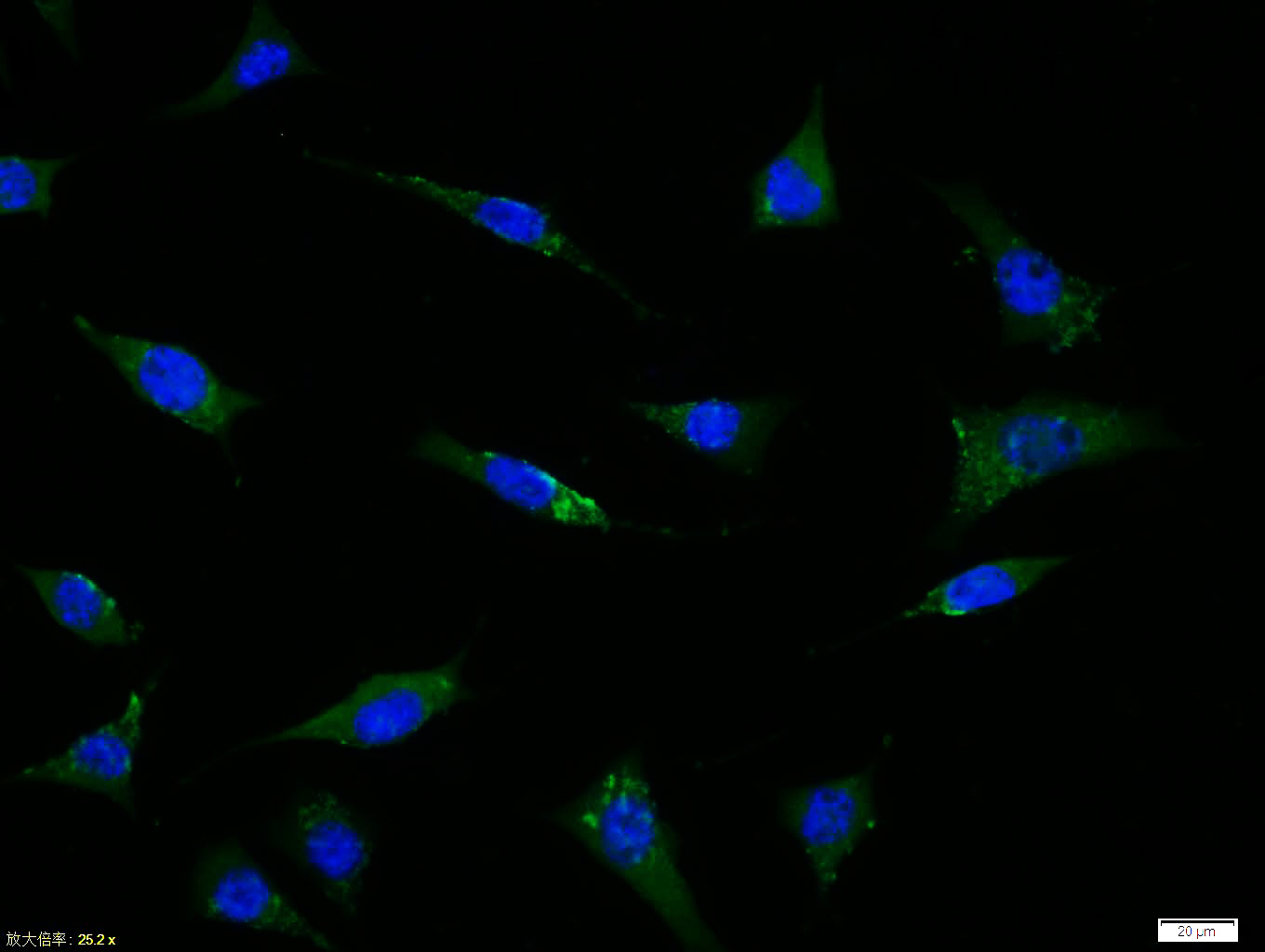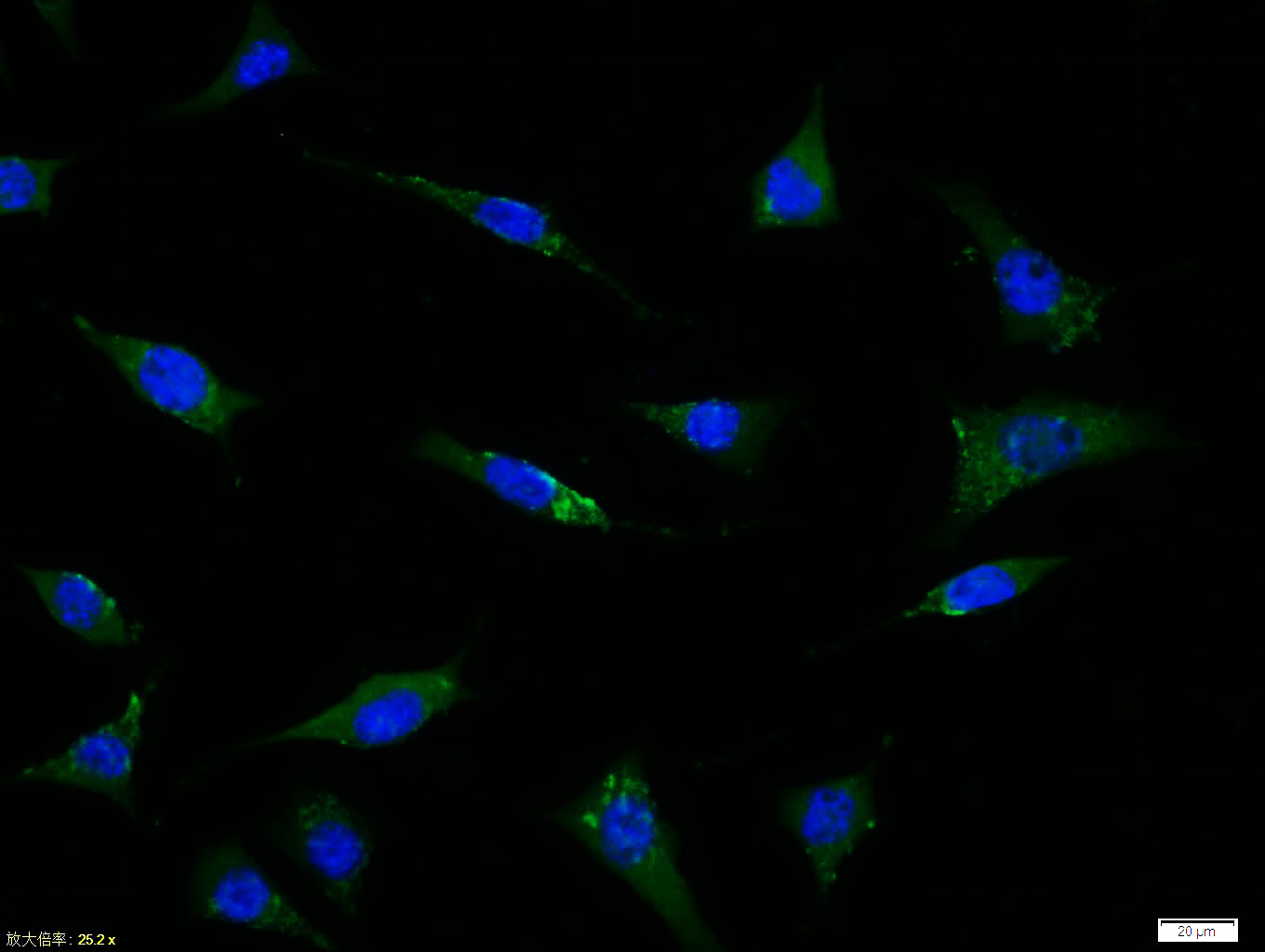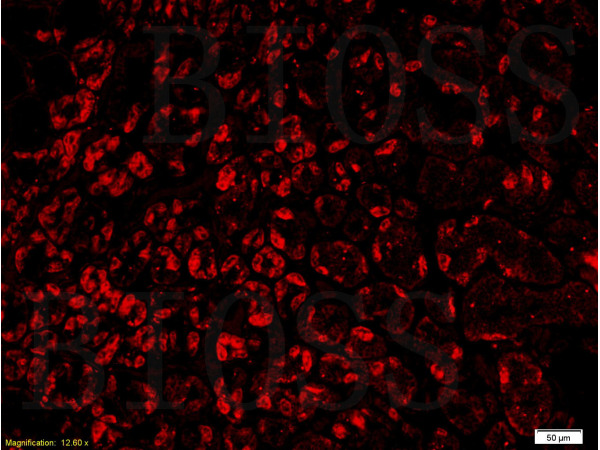
Formalin-fixed and paraffin embedded human gastric adenocarcinoma labeled with Rabbit Anti-GPR30 Polyclonal Antibody (bs-1380R) at 1:300 followed by conjugation to the secondary antibody and DAB staining.
GPR30 Polyclonal Antibody
BS-1380R
ApplicationsFlow Cytometry, ImmunoFluorescence, Western Blot, ELISA, ImmunoCytoChemistry, ImmunoHistoChemistry, ImmunoHistoChemistry Frozen, ImmunoHistoChemistry Paraffin
Product group Antibodies
ReactivityCanine, Human, Mouse, Rat
TargetGPER1
Overview
- SupplierBioss
- Product NameGPR30 Polyclonal Antibody
- Delivery Days Customer16
- ApplicationsFlow Cytometry, ImmunoFluorescence, Western Blot, ELISA, ImmunoCytoChemistry, ImmunoHistoChemistry, ImmunoHistoChemistry Frozen, ImmunoHistoChemistry Paraffin
- Applications SupplierWB(1:300-5000), ELISA(1:500-1000), FCM(1:20-100), IHC-P(1:200-400), IHC-F(1:100-500), IF(IHC-P)(1:50-200), IF(IHC-F)(1:50-200), IF(ICC)(1:50-200)
- CertificationResearch Use Only
- ClonalityPolyclonal
- Concentration1 ug/ul
- ConjugateUnconjugated
- Gene ID2852
- Target nameGPER1
- Target descriptionG protein-coupled estrogen receptor 1
- Target synonymsCEPR, CMKRL2, DRY12, FEG-1, GPCR-Br, GPER, GPR30, LERGU, LERGU2, LyGPR, mER, G-protein coupled estrogen receptor 1, G protein-coupled receptor 30, IL8-related receptor DRY12, chemoattractant receptor-like 2, chemokine receptor-like 2, constitutively expressed peptide-like receptor, flow-induced endothelial G-protein coupled receptor 1, heptahelix receptor, lymphocyte-derived G-protein coupled receptor, membrane estrogen receptor
- HostRabbit
- IsotypeIgG
- Protein IDQ99527
- Protein NameG-protein coupled estrogen receptor 1
- ReactivityCanine, Human, Mouse, Rat
- Storage Instruction-20°C
- UNSPSC12352203
References
- Wang H, Alencar A, Lin M, et al. Activation of GPR30 improves exercise capacity and skeletal muscle strength in senescent female Fischer344 × Brown Norway rats. Biochem Biophys Res Commun. 2016,475(1):81-6. doi: 10.1016/j.bbrc.2016.05.040Read this paper
- Wang H, Zhao Z, Lin M, et al. Activation of GPR30 inhibits cardiac fibroblast proliferation. Mol Cell Biochem. 2015,405(1-2):135-48. doi: 10.1007/s11010-015-2405-3Read this paper
- Zhao Z, Wang H, Lin M, et al. GPR30 decreases cardiac chymase/angiotensin II by inhibiting local mast cell number. Biochem Biophys Res Commun. 2015,459(1):131-6. doi: 10.1016/j.bbrc.2015.02.082Read this paper

